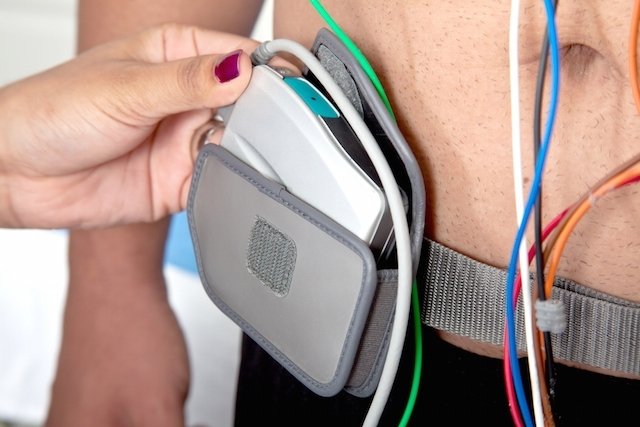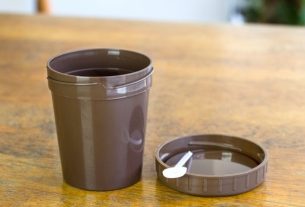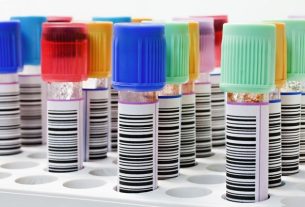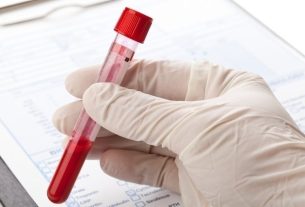The 24-hour Holter is an exam that evaluates the rhythm and heart rate, and is indicated when there are recurring symptoms of dizziness, chest pain, palpitations or shortness of breath, which may indicate cardiac changes.
Generally, the Holter exam is done for 24 hours, but it can also be done for 48 or 72 hours, depending on medical indication. This exam is performed using a battery-powered device that is connected to electrodes placed on the chest and that record the heart’s activity. This data is recorded on the device, allowing the doctor to analyze the heart later.
The 24-hour Holter exam can be done free of charge through the SUS, or through health plans, as requested by the cardiologist.

What is it for
The 24-hour Holter exam is used to evaluate changes in rhythm and heart rate over 24 hours, being very useful in diagnosing heart problems, such as arrhythmias, cardiac ischemia or atrial fibrillation, for example.
When is indicated
24-hour Holter may be indicated in the following situations:
- Palpitations;
- Slow heartbeat;
- Dizziness or fainting;
- Weakness or excessive tiredness;
- Chest pain;
- Sensation of vibration in the heart;
- Irregular heartbeat;
- Sensation of heartbeat failure.
In addition, the doctor may request a 24-hour Holter test to monitor the use of a cardiac pacemaker, or as a way to complement other heart tests, such as an electrocardiogram, for example. Learn about other tests used to assess heart health.
How to prepare for the exam
To perform the 24-hour Holter exam, some precautions are necessary, such as taking a shower before the exam, as it is not possible to shower with the device, and not applying creams, moisturizers or ointments to the chest area.
In some cases, it may be necessary to shave the chest area with a razor before the exam, so that the electrodes are well adhered to the skin.
Another important recommendation is to continue taking your usual medications as normal.
How the exam is carried out
The 24-hour Holter exam is performed by placing 4 to 8 electrodes on the skin of the chest with an adhesive gel, connected to a device that is placed on the waist and records the information transmitted by these electrodes.
During the exam, you must carry out normal daily activities, except taking a shower, as the objective of the exam is to detect variations in rhythm and heart rate in the daily activities normally performed. In addition, you should write down in a diary any changes or symptoms you have experienced during the day, such as palpitations, chest pain or dizziness.
After 24 hours, the device is removed and the cardiologist analyzes the data recorded on the equipment.
Care during the exam
Some precautions are important when using the 24-hour Holter device to avoid interfering with the results:
- Do not take a shower or enter a swimming pool, preferring to use wet wipes or a damp towel with soap to clean the groin area, armpits, face or buttocks;
- Carry out daily activities as usual, which also includes physical activities, except those that involve excessive sweating or that make the device wet;
- Avoid consuming alcohol or drinks containing caffeine such as coffee, soda or green tea, for example;
- Check that the electrodes are still well placed, as a loose electrode may interfere with the exam results;
- Avoid areas of high voltage or magnetic fields, such as magnetic mattresses or pillows, as these may interfere with the results;
- Avoid taking MRI exams or going through metal detectors;
- Avoid using electronic devices such as electric toothbrushes, razors, microwaves and even cell phones;
In addition, daily activities and other relevant information should be noted, such as symptoms presented, activity times, food and drinks consumed, stress level and any other information that the doctor may request.
After 24 hours of the Holter exam, you must return to the doctor’s office to remove the device, and you must not forget to take a record of your daily activities and symptoms.
24-hour Holter result
The 24-hour Holter result is provided by the cardiologist after checking the device’s records, such as the rhythm, frequency and total number of heartbeats, together with information on daily activities, allowing to say if there is a heart problem or if the use of any medication you are already taking is having the desired effect.
However, in some cases the heart rhythm may be normal, requiring other types of tests, such as the wireless Holter or the electrocardiographic event monitor, which can be used for longer than the 24-hour Holter.
It is important to emphasize that the result of the 24-hour Holter test must always be interpreted by the cardiologist with whom the patient is regularly monitored.
Bibliography
- SARASIN, François; et al. Usefulness of 24-h Holter monitoring in patients with unexplained syncope and a high likelihood of arrhythmias. International Journal of Cardiology. 101. 2; 203-207, 2005
- JI, CC; et al. The Role of Holter Monitoring in the Diagnosis of Early Repolarisation Pattern. Heart Lung Circ. 27. 12; 1421-1427, 2018
- BAZAN, Victor; et al. Contemporary Yield of 24-hour Holter Monitoring: Role of Inter-Atrial Block Recognition. J Atr Fibrillation. 12. 2; 2225, 2019
- MUBARIK, A.; IQBAL, A. M. IN: STATPEARLS (INTERNET). TREASURE ISLAND (FL): STATPEARLS PUBLISHING. Holter Monitor. 2021. Available at: <https://www.ncbi.nlm.nih.gov/books/NBK538203/>. Accessed on October 20, 2021
- RUSSO, V.; et al. Dynamic electrocardiogram according to Holter: from indications to reporting, a practical guide to correct use in clinical cardiology (Ambulatory dynamic Holter monitoring: a practical guide to appropriate use and reporting in clinical cardiology. G Ital Cardiol (Rome). 19. 7; 437-447, 2018

Sign up for our newsletter and stay up to date with exclusive news
that can transform your routine!
Warning: Undefined array key "title" in /home/storelat/public_html/wp-content/plugins/link-whisper-premium/templates/frontend/related-posts.php on line 12
Warning: Undefined array key "title_tag" in /home/storelat/public_html/wp-content/plugins/link-whisper-premium/templates/frontend/related-posts.php on line 13



